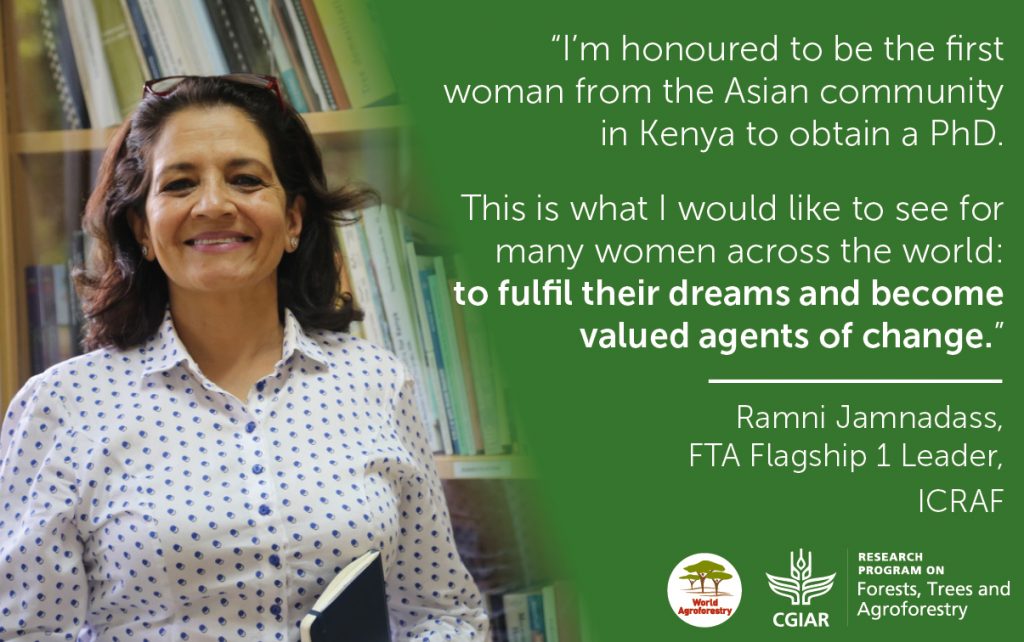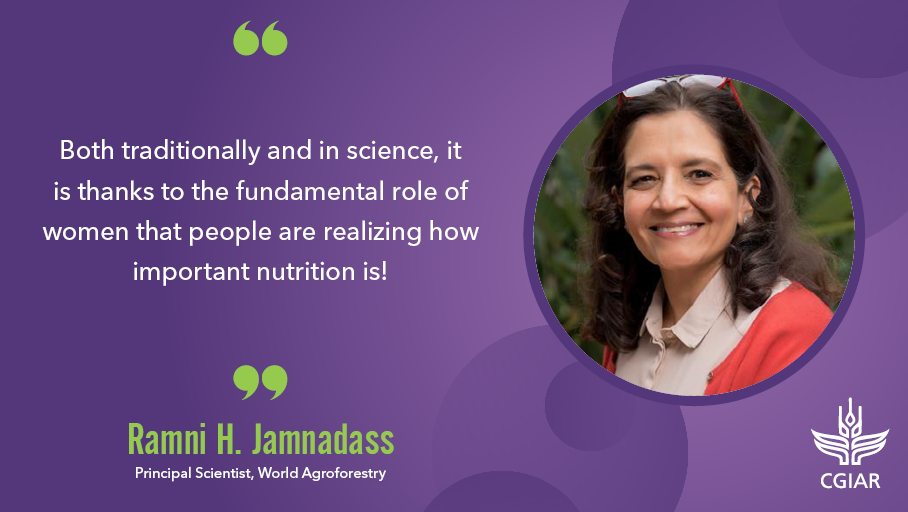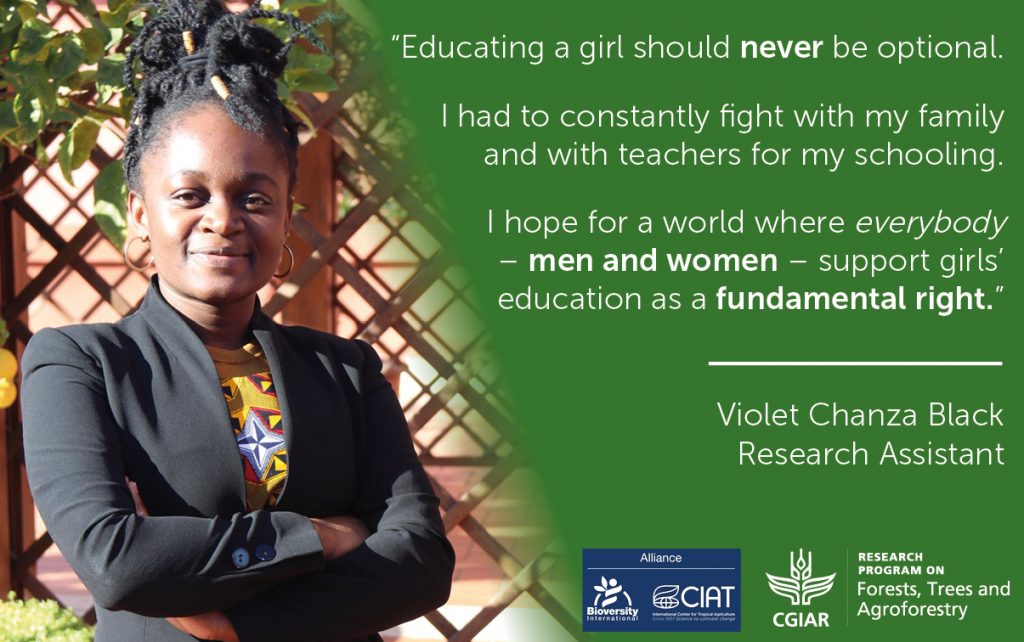Article originally posted on Forest News.
Gender equality key to sustainable resource management, says Markus Ihalainen
Rural women play an essential role in using and managing natural resources in forest and tree-based landscapes across the world — at least they should.
When women are able to participate in decision-making and equitably share resources and benefits, policies and projects in the forest sector often see increased buy-in and improved outcomes; while initiatives that ignore gender difference or exclude women tend to reinforce or even exacerbate existing inequalities, according to a 2017 brief from the Center for International Forestry Research (CIFOR).
Even so, the forestry sector has historically given limited attention to gender dynamics, said Markus Ihalainen, senior research officer at CIFOR. Although changes are occurring, much work remains to adequately address the social structures and power relations that produce or reinforce inequalities.
While gender equality is a human right and a fundamental condition for achieving sustainable development goals, women remain at a disadvantage, often wielding less power than men.
Decision-making, accessing benefits from forest and tree resources and the capacity to respond effectively to changes such as deforestation or degradation in forest and tree-based landscapes are some areas where rights may be curtailed, he said during an interview to mark the International Day of Rural Women on Thursday.
“A crisis such as the COVID-19 pandemic has made things more difficult for everyone, for example, but we also know that such challenges are often compounded by inequalities that may disproportionately increase vulnerabilities or decrease the adaptive capacities of certain groups,” explained Ihalainen, who has been involved in gender research with CIFOR since 2014.
To address these challenges, Ihalainen and other researchers in the forestry sector try to understand how roles, rights and responsibilities are divided between local men and women, particularly with regard to land use.
Policies that emerge from research recommendations should measure how benefits are shared, while also accounting for various other gender-related risks, he said.
Rural women’s contributions to development and conservation need to be supported by fair remuneration for their work and access to resources; they should be recognized as critical stakeholders in sustainable natural resource governance.
Ihalainen shared additional insights about his work in FTA:
Q: What makes this field interesting for you?
A: I think there are a number of things that make the research on gender and environment interesting. First, for anyone who wants to see a more equal world, it’s pretty hard to ignore the pervasiveness of gender inequality virtually across the globe. In rural areas, we see rapid transformations shaped by political, socioeconomic and environmental changes – especially climate change. Our work shows that, if left unchecked, many of these trends risk reinforcing or even exacerbating gender inequality.
The forestry sector in particular has historically given limited attention to gender, but I think this is slowly starting to change. People are increasingly interested in understanding what they can do to enhance equality through their work. Being a part of and able to support this process by providing relevant evidence and recommendations is a great motivating factor for me.
Q: Do you encounter challenges studying rural women as a male researcher?
A: I think understanding these things is just as important for men as for women.
It’s not really about studying rural women per se, but about understanding how different social structures and power relations at different levels produce or reinforce inequalities; these inequalities often disproportionately affect rural women. We are all part of those structures whether we want to be or not. We all shape social structures through our actions or lack thereof.
I think that one of the most important contributions of feminist theory has been its critique of so-called scientific objectivity – the idea that the researcher is just a neutral observer of reality. Our ideas are not void of our biases; they are influenced by our background and social status, and most people, I hope, who have done field research in a cross-cultural setting could think of a time when they felt the research situation was influenced by the social dynamic between the respondent and the researcher. As a white male working on gender research mainly in Africa, this definitely goes for me too, so I’ve really learned the importance of working with a socially diverse team. A diverse research team is important not just to overcome the sometimes difficult power dynamics in interviews, but also because of the richness that different perspectives bring to the analysis.
Q: In your opinion, what are the top issues facing rural women today?
A: Many of the broader trends that are shaping or compounding challenges faced by rural women are issues that affect us all, but the distribution of outcomes is shaped by many intersecting power dynamics, including gender. The COVID-19 pandemic is an example of this. For instance, studies are suggesting that as a consequence of the pandemic, many rural women are taking on a disproportionate share of care work. Mobility restrictions and value chain disruptions may disproportionately affect many female-dominated occupations, including marketing and casual agribusiness labor.
Additionally, female farmers often have unequal access to information technology when compared with their male counterparts. This can make it harder for women to connect with other value chain actors, particularly when physical mobility is restricted.
Climate change is of course another pressing issue. As a result of longstanding efforts by researchers and advocacy groups, there is finally a relatively common recognition of the fact that gender dynamics and inequalities influence how rural women and men experience and cope with climate change — though there is still a long way to go in terms of making sure that recognition leads to effective action on the ground.
So there are definitely many challenges facing rural women that require urgent action, such as enhancing rural women’s access to resources and markets or improving their job security and extending social protection. But those challenges are also symptoms of fundamentally unequal social structures.
Because of various inequalities, many rural women are more exposed to negative impacts of events in general, including the COVID-19 pandemic, climate change and other threats. While there is an urgent need to address those impacts, we must not lose sight of the broader structures and systems that keep rural women in a position where they remain more vulnerable. Otherwise any new arrangements are like a band-aid solution – no matter whether they are related to restoration, renewables or any strategy – they will end up reproducing the same inequalities.
As we’re rethinking our production systems and values in order for society to stay within Kate Raworth’s doughnut — a set of social and planetary boundaries for humanity to thrive in the 21st century — we really need to make sure gender equality is at the core of these efforts.
Q: What inspires you about the rural women that you have encountered during your research?
A: There are so many women I have met who show incredible resilience and innovation — often under dire circumstances. So although it is really important to highlight the structures that shape the challenging circumstances rural women face, the way in which media often frames rural women as passive victims does not do them justice. In other words, a focus on marginalization, tends to perpetuate a framing of women as passive — rather than as active authors of their own destinies. They should be supported through the creation of structures and supporting processes that enhance their abilities to exert their agency and challenge the structures that limit that space. However, taking steps to recognize women’s agency must go beyond human interest stories and translate into real and meaningful engagement with rural women and their aspirations.
Q: How can rural women contribute to the transition to a resilient, low-carbon society?
A: I think it’s important to recognize the contributions of rural women and men in managing natural resources. For instance, a study led by the Rights and Resources Initiative found that Indigenous peoples manage nearly 300 billion metric tons of carbon stored above and below ground on their lands. Other studies by CIFOR and others have demonstrated that gender-inclusive resource user groups often perform better in terms of governance and conservation outcomes.
However, it’s equally important to recognize that although the rural poor in low-income countries are not to blame for the climate emergency the world is facing, they are often the ones facing the gravest impacts and, as mentioned earlier, those impacts are often differentiated by gender and other social factors. That’s why we emphasize the need for a just transition, with gender equality as a core objective.
A just transition requires ensuring that rural women have options and means to cope with the impacts of climate change, as well as making sure they have the rights, resources and necessary support to effectively participate in a low-carbon society in ways that contribute to their empowerment and well-being.
Q: What messages do you hope people take from the International Day of Rural Women?
A: This day was established to recognize the role that rural women play in enhancing rural development. Yet despite their crucial role in agricultural production and in ensuring household food security, gender inequalities — often influenced by intersecting socioeconomic factors — continue to disproportionately disempower rural women. While there have been numerous global commitments and agendas to enhancing gender equality, progress has been slow. The imminent transition towards more resilient, low-carbon societies and production systems also provides an opportunity to take a leap in terms of gender equality, but that requires equity and justice to be at the core of our strategies. There is a lot of data and evidence to draw on; now we need action!
Q: What projects are you particularly excited about and where can we learn more?
A: There are a number of projects that I think are really interesting. Pending COVID-restrictions, we are starting field work in Ghana to study the gender dynamics across different palm oil production systems. I am also working on charcoal value chains in a number of African countries, it’s been really interesting to learn that women are actually participating a lot more than what the conventional wisdom dictates. We are also wrapping up a longitudinal analysis of women’s agricultural labor force participation in Indonesia. A lot of interesting findings coming out – stay tuned for the paper coming out soon. Finally, in partnership with EnGen Collaborative and a number of organizations in the GLF gender constituency, we are currently developing an online learning module on gender-responsive forest and landscape restoration. This feels very timely in these teleworking times, but we think this will be a really useful and engaging tool for different restoration stakeholders to enhance their capacities on gender mainstreaming even in the post-COVID world.














